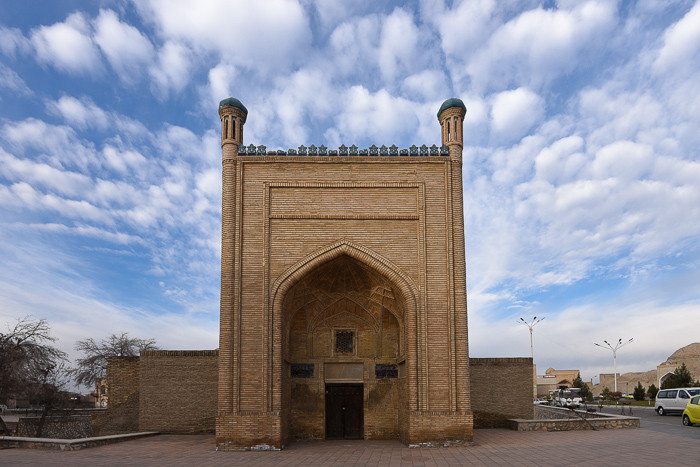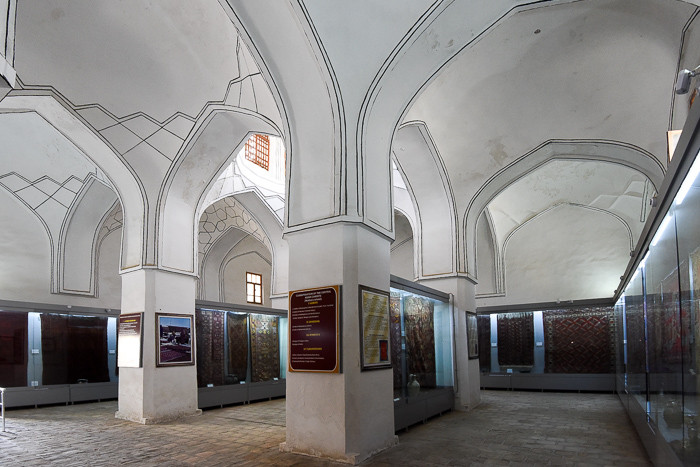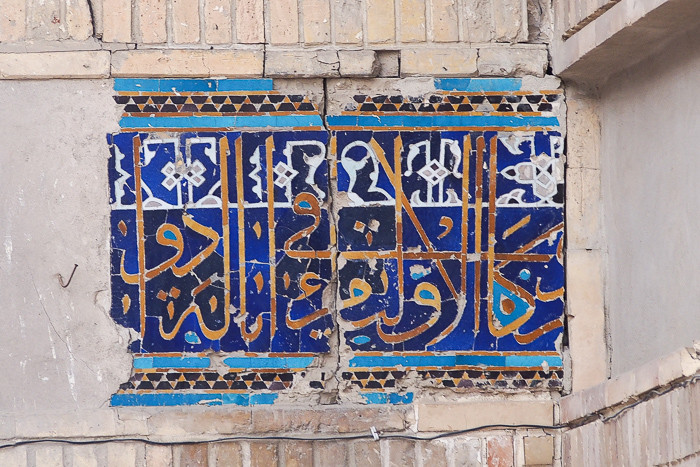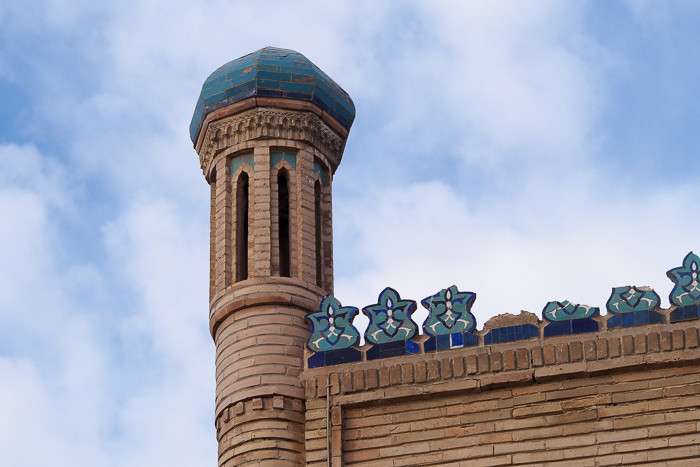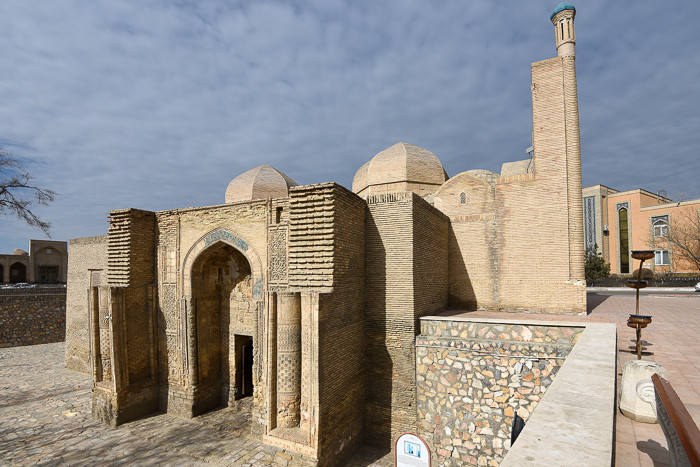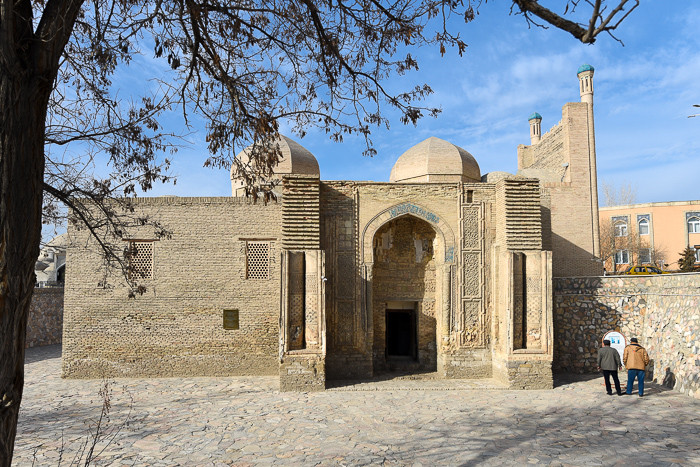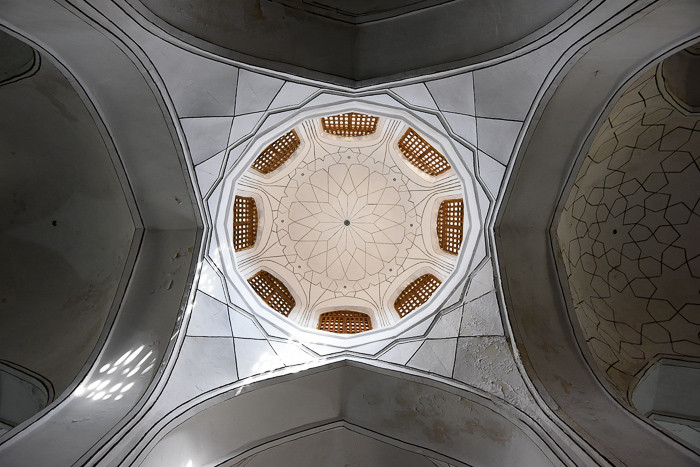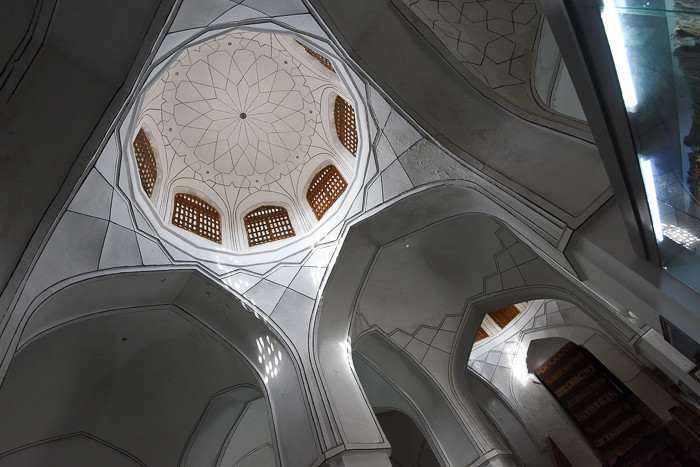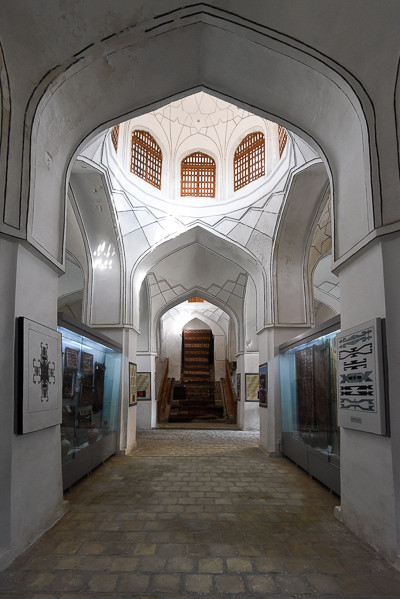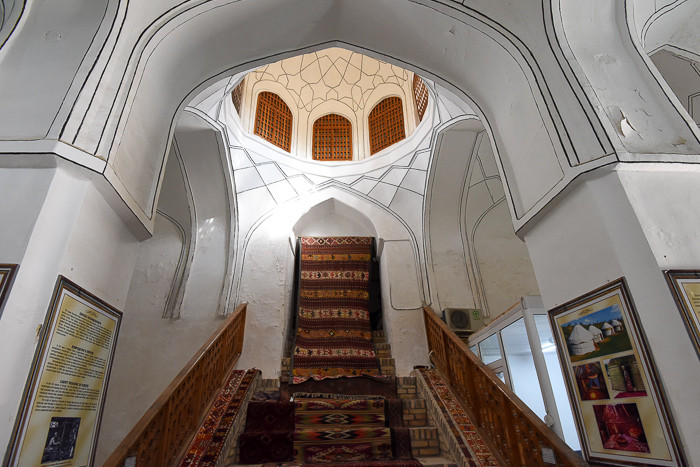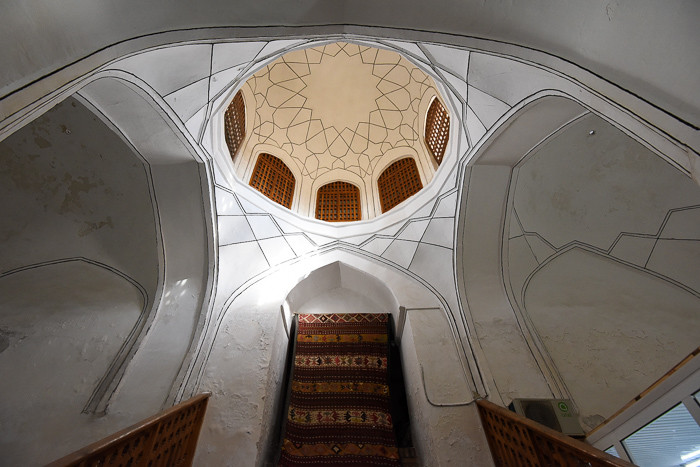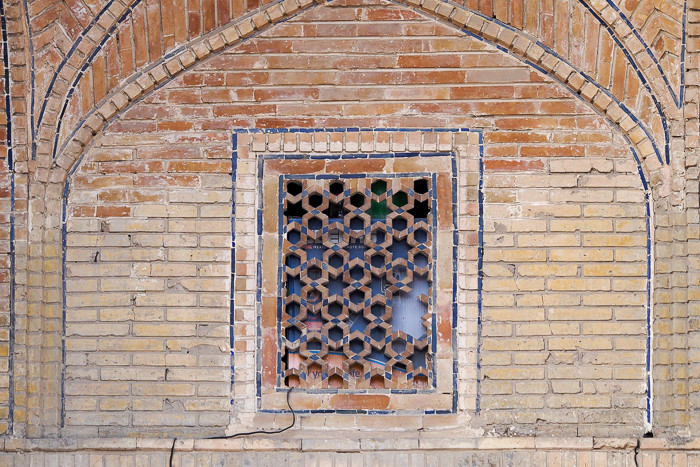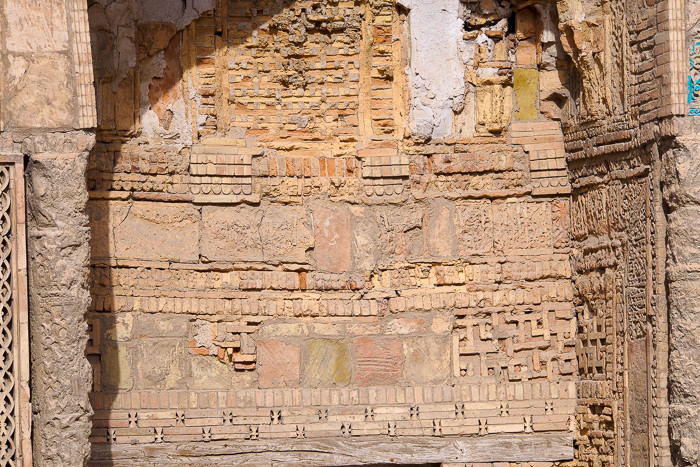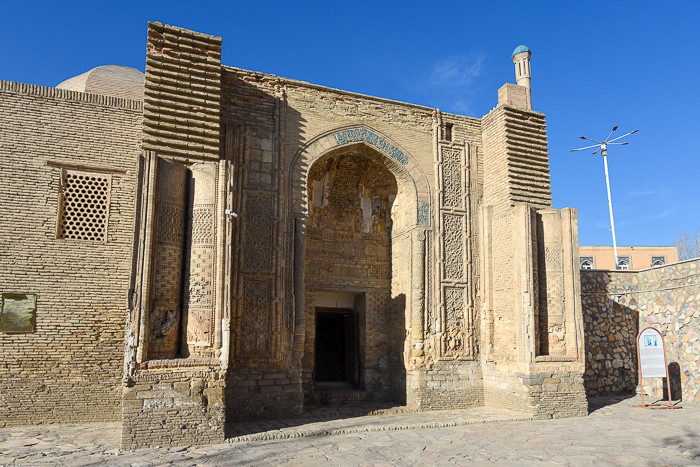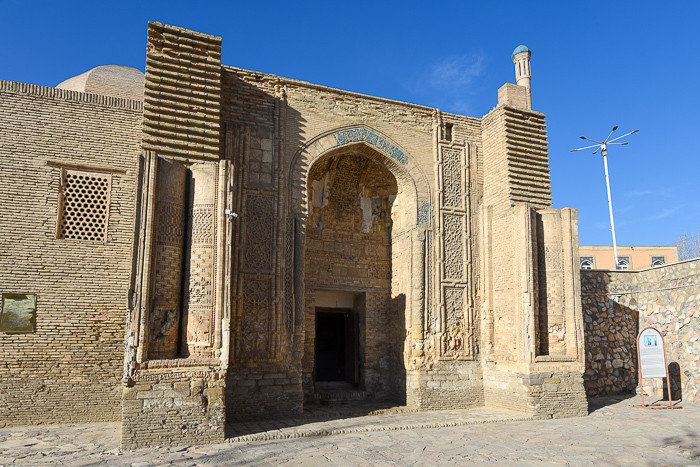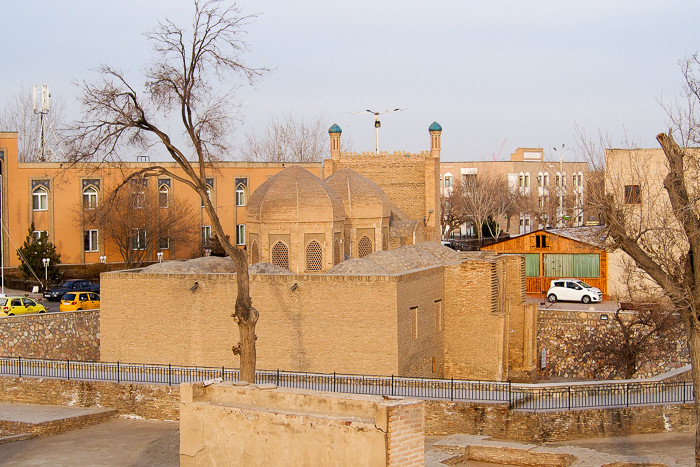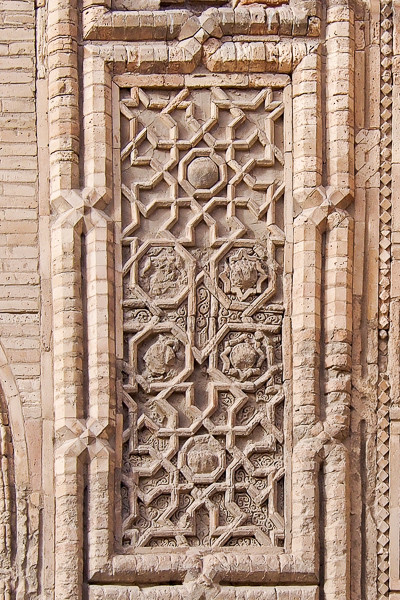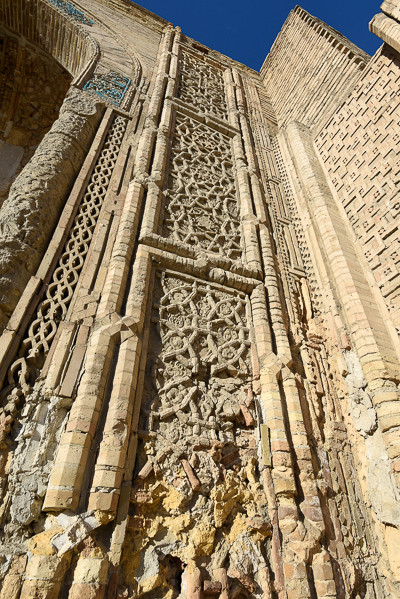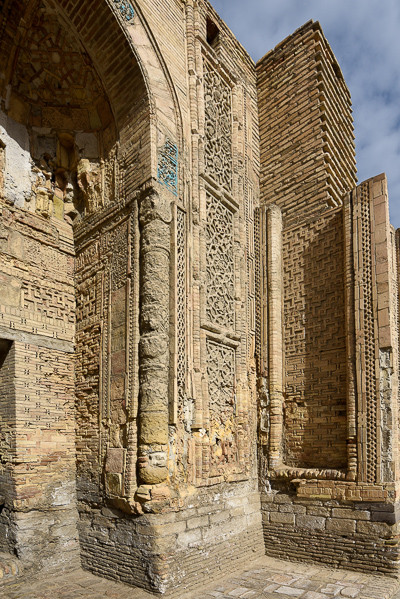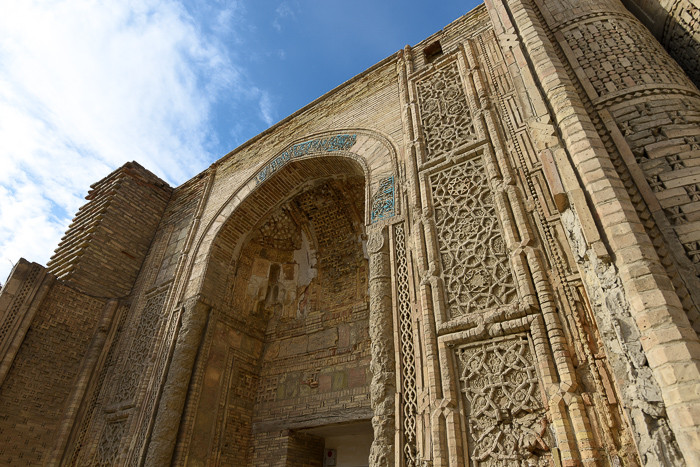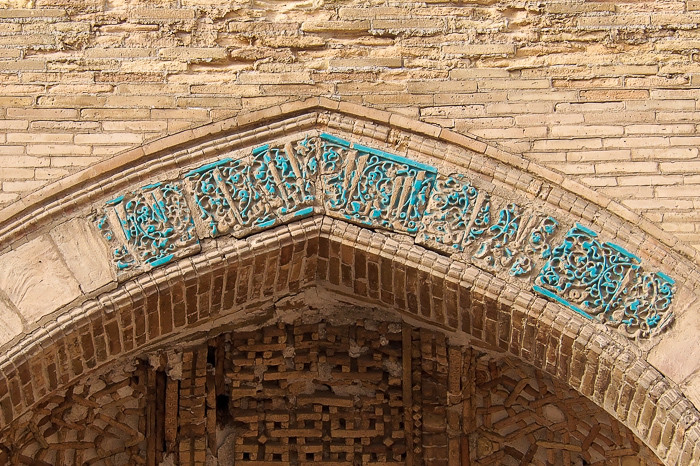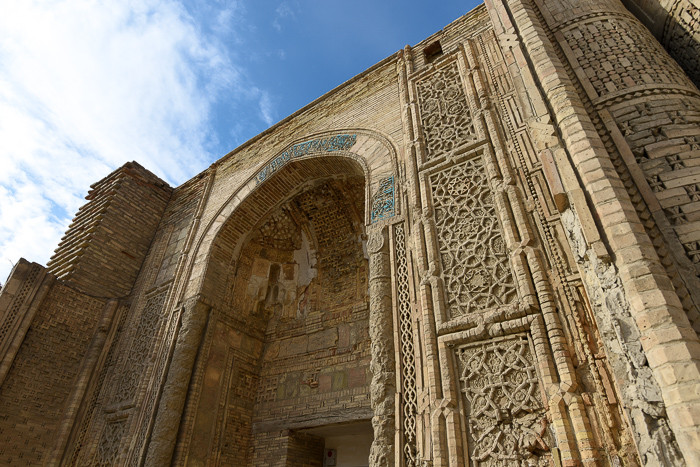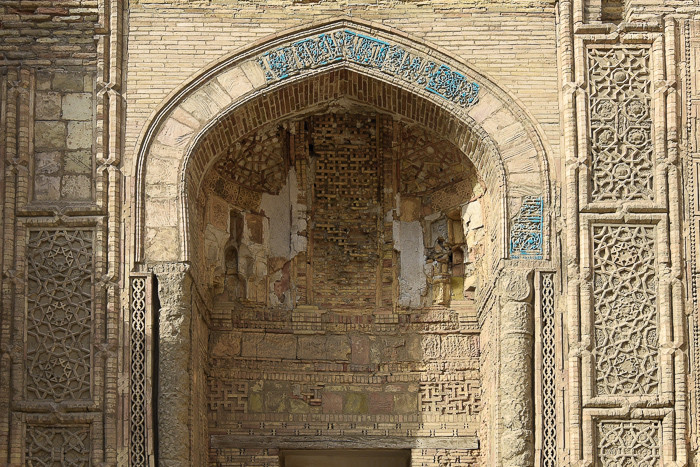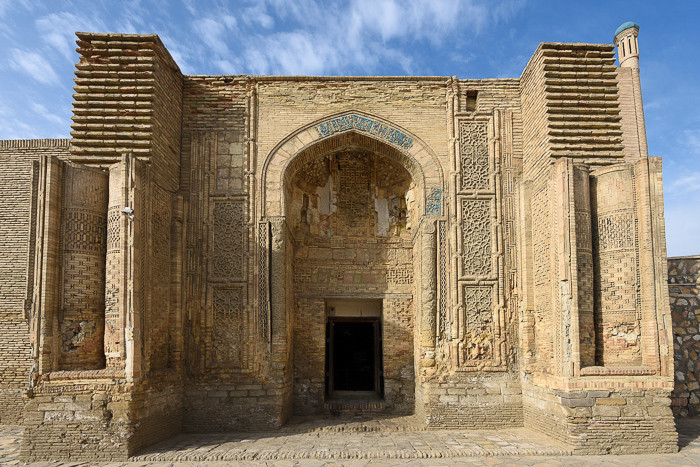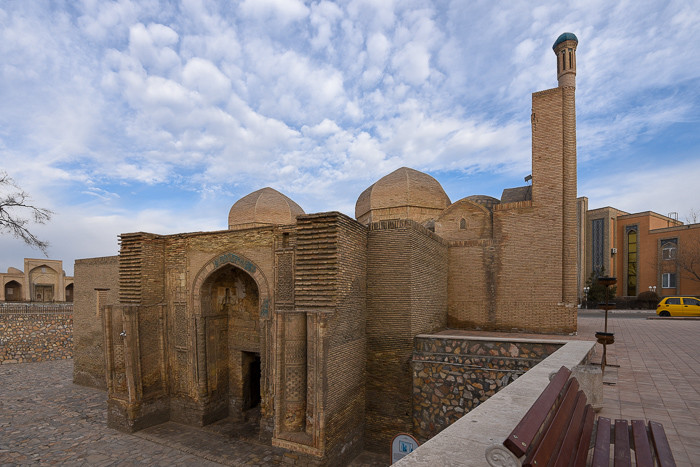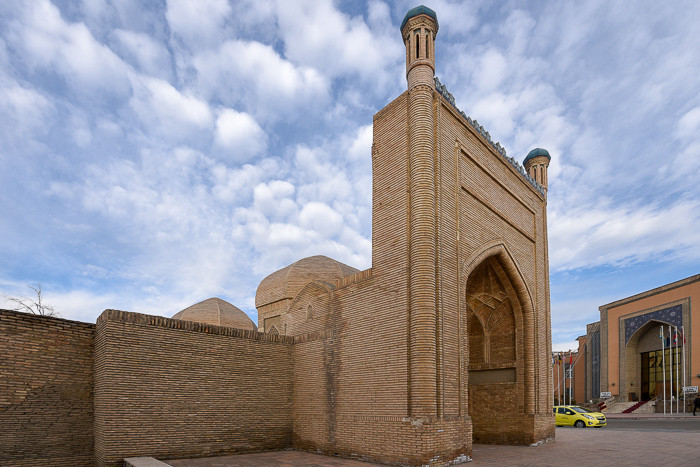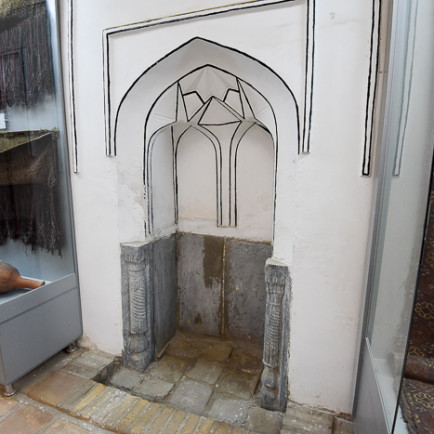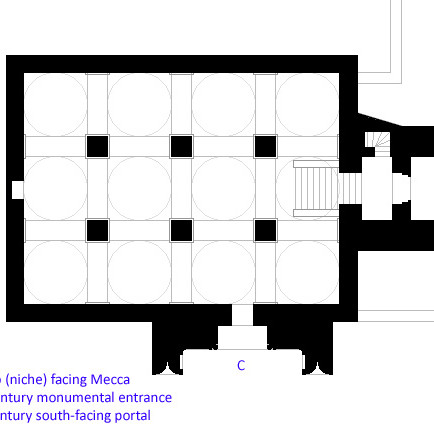Magok-i-Attari Mosque
History
The Magok-i-Attari Mosque is located immediately west of the Lyabi-Hauz pond and architectural ensemble. It is one of the few structures in Bukhara that was partly (or wholly) built prior to the Mongol invasions of 1219-21. According to Edgar Knoblauch it is the oldest surviving mosque in Central Asia, built atop the foundations of a temple that was already present in Sogdian times. The historian al-Narshahki, who completed his History or Bukhara in 943 or 944, notes that the mosque was built on the site of a fire temple that pre-dated the arrival of Islam; most likely this was a Zoroastrian fire temple used by the Sogdian population of pre-Islamic Bukhara. Narshahki also mentions that a thriving fair was located nearby that traded in idols twice a year with 50,000 dihrams changing hands in a single day. Most unusually, the fair was tolerated by the Islamic rulers and continued to exist even in Narshahki's own era, indicating that a substantial part of the population had yet to convert to Islam.
Urban and Architectural
The building has a rectangular ground plan of 12 x 7.5 square meters.The interior of the mosque is laid out in a 3 x 4 bay grid pattern with domes over each of the bays. Two of the central domes are raised on high drums to admit light.
Further alterations to the mosque were made from 1547-48 by the Shaybanid rulers of Bukhara who added a monumental east-facing pishtaq. The surrounding streets were already much higher than the ground level of the mosque; the contradiction was awkwardly resolved with a set of stairs that lead down into the interior from the pishtaq's antechamber. The pointed arch of the iwan is resting on two quarter columns set in walls, decorated with wattle. On each side of the iwan, three rectangular frames with decorative patterns are arranged one above the other.
Description
Narshahki refers to the mosque as the "grand Mosque of Makh" which took its name from the bazaar of Makh where the trade in idols flourished (the bazaar, in turn, took its name from a legendary Bukharan king named Makh). However, later in his chronicle Narshahki refers to the building as the "mosque of Maghak" which is the same as its modern name Magok meaning "recessed"; this suggests that the mosque was already located below ground level even in his own time. Today, the mosque is located some 4 meters below the level of the surrounding city as many centuries of building and rebuilding have raised the overall ground level in the surrounding district. The remainder of the mosque's name, attari, means "perfumers" in reference to the fragrances also traded at the bazaar. No traces of the Mosque of Makh remain except for bits of alabaster decoration and traces of brickwork found during archaeological excavations. Presumably the structure was either destroyed or burned down, though the present layout probably follows its floorplan. The current structure is a palimpsest of various architectural ages beginning with the 12th century; the mosque's southern portal was probably constructed by the prolific builder Abd al-Aziz II, a Karakhanid-era ruler who also built the Namazgah Mosque and Minaret of Vobkent, both of which survive. The portal is laid out with two sets of paired quarter-columns on opposite sites of the pishtaq. The quarter-columns are addorsed (turned back to back), giving each set the appearance of half-open books or two scrolls standing side-by-side. The historians Bloom and Blair suggest this arrangment has roots in pre-Islamic design. The central portion of the pishtaq is quite similar in design to that of the Chashma-Ayub of Vobkent—so much so that Hatstein and Delius note that "...it could be assumed that the same building master was responsible for both of the portals" . The pishtaq's arch is crowned by an epigraphic frieze, now partially destroyed, in blue glazed tiles.
References
All images copyright 2019 Timothy M. Ciccone. Photographed February 2019.
Details
Location
55 Mekhtar Anbar Str., Buxoro 200118, Uzbekistan
Year of Build
9th to 10th century
Area
90 square meters
Drawings
Map
History
The Magok-i-Attari Mosque is located immediately west of the Lyabi-Hauz pond and architectural ensemble. It is one of the few structures in Bukhara that was partly (or wholly) built prior to the Mongol invasions of 1219-21. According to Edgar Knoblauch it is the oldest surviving mosque in Central Asia, built atop the foundations of a temple that was already present in Sogdian times. The historian al-Narshahki, who completed his History or Bukhara in 943 or 944, notes that the mosque was built on the site of a fire temple that pre-dated the arrival of Islam; most likely this was a Zoroastrian fire temple used by the Sogdian population of pre-Islamic Bukhara. Narshahki also mentions that a thriving fair was located nearby that traded in idols twice a year with 50,000 dihrams changing hands in a single day. Most unusually, the fair was tolerated by the Islamic rulers and continued to exist even in Narshahki's own era, indicating that a substantial part of the population had yet to convert to Islam.
Urban and Architectural
The building has a rectangular ground plan of 12 x 7.5 square meters.The interior of the mosque is laid out in a 3 x 4 bay grid pattern with domes over each of the bays. Two of the central domes are raised on high drums to admit light.
Further alterations to the mosque were made from 1547-48 by the Shaybanid rulers of Bukhara who added a monumental east-facing pishtaq. The surrounding streets were already much higher than the ground level of the mosque; the contradiction was awkwardly resolved with a set of stairs that lead down into the interior from the pishtaq's antechamber. The pointed arch of the iwan is resting on two quarter columns set in walls, decorated with wattle. On each side of the iwan, three rectangular frames with decorative patterns are arranged one above the other.
Description
Narshahki refers to the mosque as the "grand Mosque of Makh" which took its name from the bazaar of Makh where the trade in idols flourished (the bazaar, in turn, took its name from a legendary Bukharan king named Makh). However, later in his chronicle Narshahki refers to the building as the "mosque of Maghak" which is the same as its modern name Magok meaning "recessed"; this suggests that the mosque was already located below ground level even in his own time. Today, the mosque is located some 4 meters below the level of the surrounding city as many centuries of building and rebuilding have raised the overall ground level in the surrounding district. The remainder of the mosque's name, attari, means "perfumers" in reference to the fragrances also traded at the bazaar. No traces of the Mosque of Makh remain except for bits of alabaster decoration and traces of brickwork found during archaeological excavations. Presumably the structure was either destroyed or burned down, though the present layout probably follows its floorplan. The current structure is a palimpsest of various architectural ages beginning with the 12th century; the mosque's southern portal was probably constructed by the prolific builder Abd al-Aziz II, a Karakhanid-era ruler who also built the Namazgah Mosque and Minaret of Vobkent, both of which survive. The portal is laid out with two sets of paired quarter-columns on opposite sites of the pishtaq. The quarter-columns are addorsed (turned back to back), giving each set the appearance of half-open books or two scrolls standing side-by-side. The historians Bloom and Blair suggest this arrangment has roots in pre-Islamic design. The central portion of the pishtaq is quite similar in design to that of the Chashma-Ayub of Vobkent—so much so that Hatstein and Delius note that "...it could be assumed that the same building master was responsible for both of the portals" . The pishtaq's arch is crowned by an epigraphic frieze, now partially destroyed, in blue glazed tiles.


